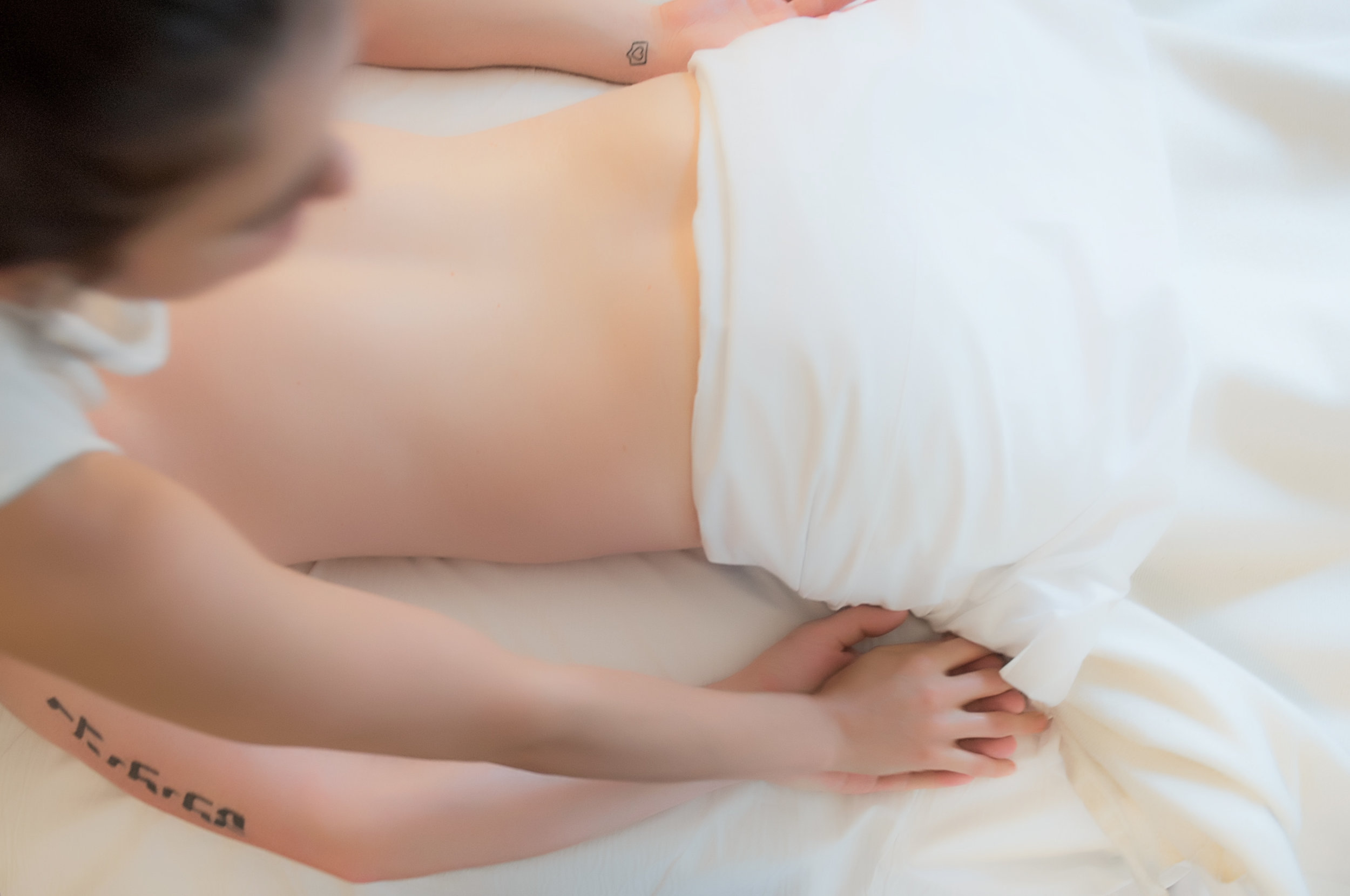it’s all about the little things when it comes your massage therapy experience. we are keen as a clinic to ensure your comfort & therapeutic care here at Sore Spots is top notch. here are a few things for you to keep in mind when receiving massage therapy on our tables.
Breathe. Breathing from your diaphragm will be the minimum amount of work we require from you.
Breathing mindfully can alter your perception of pain, increasing your sense of well-being & enhances the circulatory effect of massage.
Feel tension while breathing deep? Tell your RMT. They can provide breath work coaching & treat tight muscles that restrict breathing with depth.
Pre-book & schedule strategically. Many of our RMT’s book 1-8 weeks in advance. We suggest shoring up your next appointment with your preferred therapist, day & time by setting something up on a monthly basis. If your not ready at the time of your appointment or find there is a conflict, rescheduling with a minimum of 24 hours notice is welcome. On a side note, often day-time appointments can be more available and evening spots harder to come by. So taking some time away from work for a ‘medical appointment’ is quite common among our client base. Many people find the medical benefits of massage therapy an integral part of their mental and physical health. So be sure to carve out time for your care when it is most convienant & realistic for you to a) receive the care you want & b) that you will be able to disconnect for a mini 1 hour vacation from either work life or home life.
Communicate. Your RMT will always prompt for feedback throughout your treatment. At any given point, you are also welcome to provide feedback on any specific technique or just generally how your feeling during a session. We are here to help you and your honest feedback is a practice in advocating for your body. If the pressure is too deep, please say so and if it’s not deep enough, yes….let’s have a conversation about that too. As massage therapists, we really do want to know how massage is affecting you during and after sessions. We want to ensure what we say & talk about during treatment is of service to your healing. While your massage therapist loves to hear about aspects of your life outside of your body based pain, we really are most interested in how to assist you therapeutically….so if your a talker, please do allow for a practice of quiet during your session. Your RMT will also guide you in breathwork at times which will make this easier to do.
our RMT’s will use an analog pain scale to gauge your perception of sensation during treatment
Food & drink. Ideally, you’ve eaten well the day of your massage….but not too well. It may be uncomfortable to lie on a belly full of food so play it safe in the meal planning & digest accordingly. While your at it, stay hydrated but watch that you don’t consume a marathon of water prior to your session. Having a full bladder for the last 10 minutes of treatment will ruin a good massage. On a side note, you can always ‘toga up’ and use the washroom during a treatment. On the subject of ‘drink’, please avoid over indulging in alcoholic beverages the day before your appointment and if your planning on drinking in the hours after a massage know that massage increases circulation and any alcohol consumed could hit the bloodstream a little faster than usual so do consume mindfully.
Mr. Sun. Please wear sunscreen & shade. It’s awful to see sunburns on our clients during the spring, summer & early fall months.
May is Sun Safety month & the Dermatology Association of Canada has guidelines for sun exposure & sunscreen application for everyone with specific notes for babies & seniors.
Please do take a moment before the hot sun of the Summer hits to review.
Drugs. Especially pain relief drugs like Tylenol or Advil that have not been prescribed by a doctor. If your coming to a massage treatment because of soft tissue or joint pain than it is ideal that you are coming with an unaltered sense of how that pain is feeling in the current moment. On a cellular level, your natural inflammatory response can contribute positive to your healing process - click here to read a recent CBC article about the latest research findings concerning the use of NSAIDS & current usage suggestions. Pain relief drugs alter your perception of pain and we need your ability to perceive discomfort to stay in tact as much as possible so as to ensure we provide a safe & of course, pain relieving treatment.
You don’t have to be naked. Essentially, we may only need to have bare skin contact to your areas of concern. However, we can also simply work through your clothing and in some cases, as RMT’s we may actually prefer working through the cloth of what you’re wearing for added grip or for the initial start to treatment.
Be sure that any clothing that remains on during a draped table treatment feels comfortable and unrestrictive (i.e. you can wear your jeans in the case of an upper body treatment, but don’t wear your belt so that it’s digging into your waistline etc). Also, feel free to undress entirely if that allows you to feel more relaxed.
Your therapist will still be following our industry standards & ensuring drape lines are secure as well as only undraping the area we are working on at any given time during treatment. In the interest of talking about clothing, there are other things on your body like watches and jewelry - don’t forget to remove those! Worried about greasy hair lines - be sure to let us know & if you are wearing a tight poney tail or lots of hair pins, please communicate to your RMT if it’s ok to loosen or release those accessories from your scalp. Effective scalp & jaw treatments that may be helpful for things like TMJ or the treatment of headaches require us to work through hair & having overly tightened hair fixtures in place may prevent us from thoroughly attending to this concern. & for the record, leg hair, arm pit hair, any body hair really….we don’t care! No need to apologize or even mention the fact that you did or did not shave etc.
Know your insurance. The good news is……you have health insurance that covers massage therapy treatment. The bad news…..you may not have the coverage that pays for all the treatment you need or would like to receive in the run of a year. So please do look into the details of your coverage. Do you require a doctors note for direct billing? Do you have a co-pay amount or an initial annual deductible? When does your policy year end? Is your massage therapy coverage lumped in with other extended health services (like chiro or physio)? Or is it seperate in it’s own category? Do you have a secondary plan that you can submit to after your primary plan runs out? You don’t need to know everything, but check in on the details of your plan every so often &/or call the 1-800 or 1-888 # on the back of your card. We have an extended information page around ‘direct billing’ for our clients so please do click here to read more.
Exercise. We recommend to take it easy after your massage session. Let us know if you plan on excercising afterwards. This may alter our approach & can affect your performance. There are sports related massage techniques that can enhance your physicality but the timing of these types of techniques is very important.
Generally speaking with massage therapy we are interested in triggering a deep relaxation response and some types of exercise can ask your nervous system to operate at the complete opposite end of that spectrum. So we don’t advise clients to go from one extreme to another. A little bit of yoga, some light core conditioning may be well received after treatment but we suggest staying away from running your best 10K or taking part in a kettle bell class immediately after a therapeutic massage. Your therapist may offer some prescriptive home care advise following your treatment so please do aim to integrate these suggestions in the days or weeks following treatment to ensure the benefits of your massage last longer.
Time. Most times your massage therapist will be on time to start your appointment & if not will come to greet you to let you know if there will be a delay. Otherwise, it is ideal that you come on time to your appointment. Any lateness may be included as part of the treatment time booked.







